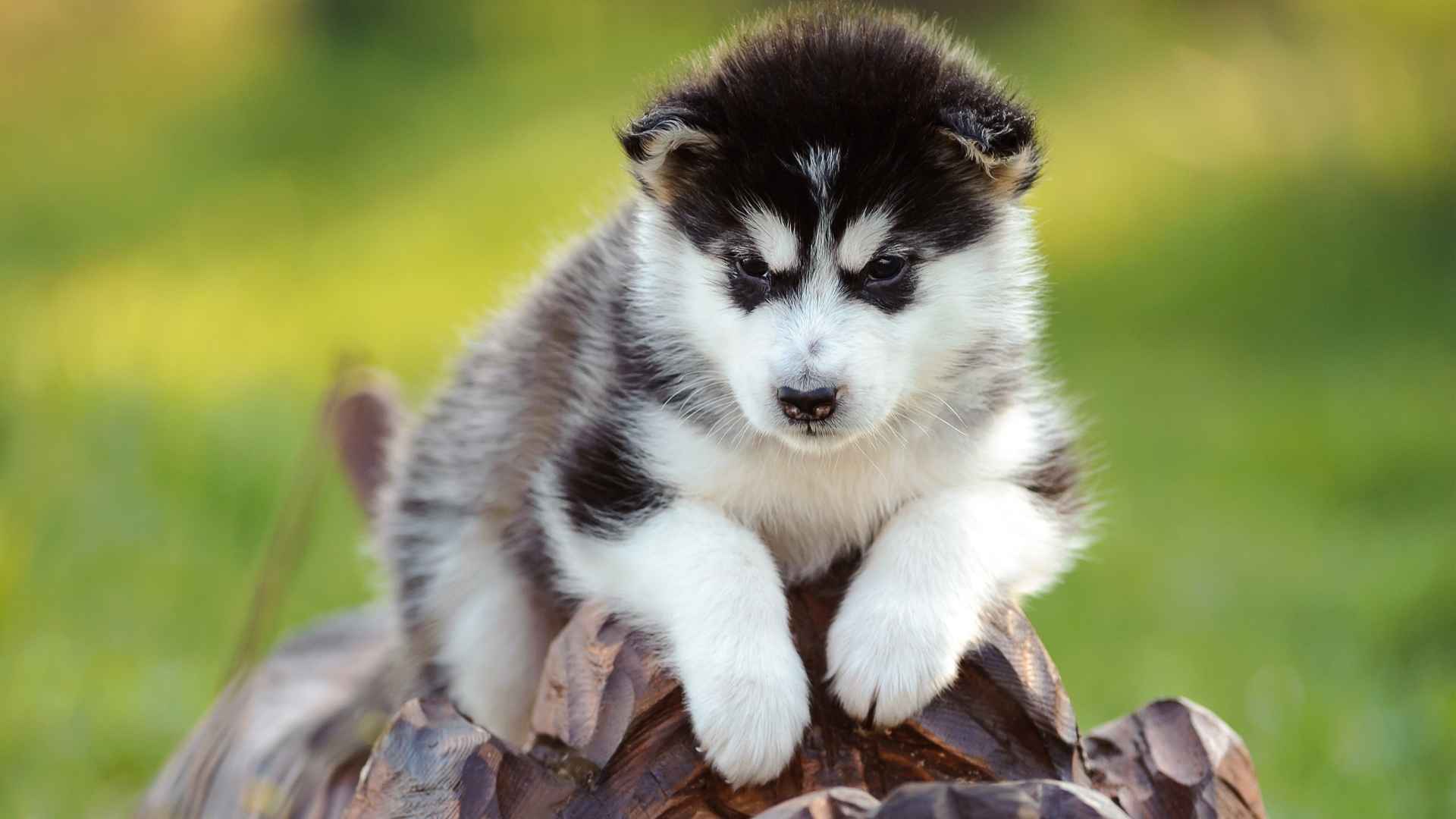For thousands of years, dogs have held a cherished place in human history, evolving from wild wolves into loyal companions. While some experts trace the domestication of dogs back to around 40,000 years ago, DNA analysis hints it could have begun as far back as 130,000 years. Throughout the millennia, breeds have been shaped by climate, geography, and human needs, some fading into extinction, others adapting and enduring the test of time.
Among the countless breeds that have come and gone, a rare few have preserved their ancient lineage. These time-honored canines have not only survived but thrived, embodying the strength, intelligence, and loyalty that once made them indispensable to early civilizations. They hunted, guarded, and lived alongside humans, forming bonds that transcended survival and entered the realm of companionship.
In this article, we delve into the fascinating world of ancient puppy breeds, those remarkable dogs whose ancestry reaches deep into prehistory. Discover the stories, traits, and legacies of these enduring furry friends who continue to share our lives today.
Ancient Puppy Dog Breeds
1. Greenland Sled Dog
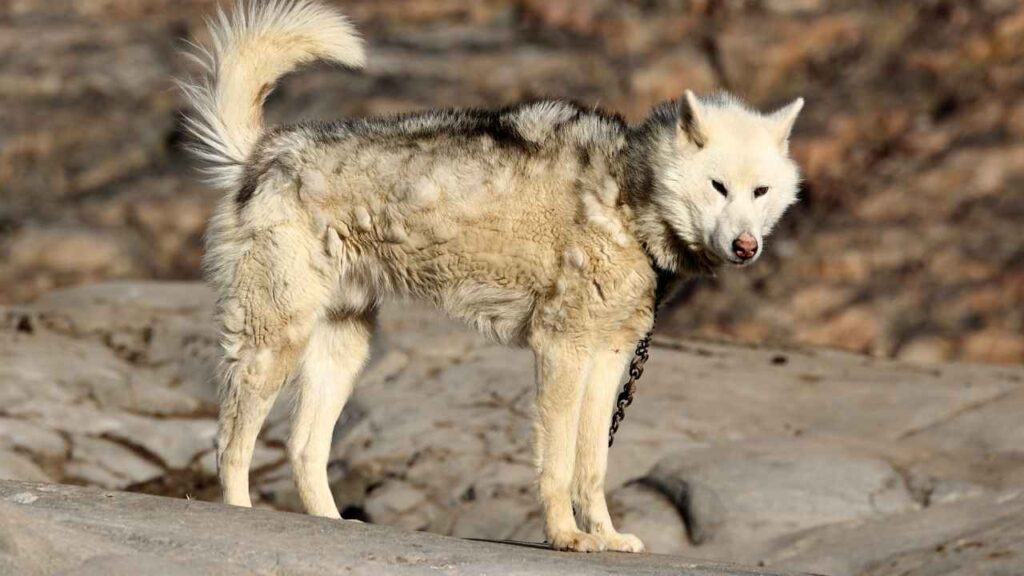
Among the world’s most ancient puppy breeds, the Greenland Sled Dog stands out not just for its resilience but for its unbroken connection to early Arctic life. Though it shares a striking resemblance to Huskies and Malamutes, its genetic blueprint tells a different story, one shaped by centuries of survival in the unforgiving polar landscape.
Bred for endurance, these dogs have thrived on high-fat diets and grueling sled-pulling work in low-oxygen environments, showcasing an evolutionary path distinct from most modern breeds.
History
Originating in Greenland around 7500 BC, the Greenland Sled Dog has a direct lineage to prehistoric sled dogs like those unearthed on Siberia’s Zhokhov Island. Unlike many modern breeds, it shows no evidence of interbreeding with gray wolves in the last 9,500 years.
This purity reflects a long history of co-evolution with Arctic peoples, adapting in tandem to extreme cold, physical exertion, and protein-rich sustenance. Their unique physiology, particularly their ability to regulate body temperature efficiently, was crucial for both transportation and hunting in the far North.
Did you know? Since 2018, Greenland Sled Dog populations have plummeted due to climate change, diminishing food sources, and disease outbreaks, putting this ancient breed at risk of extinction.
2. Afghan Hound
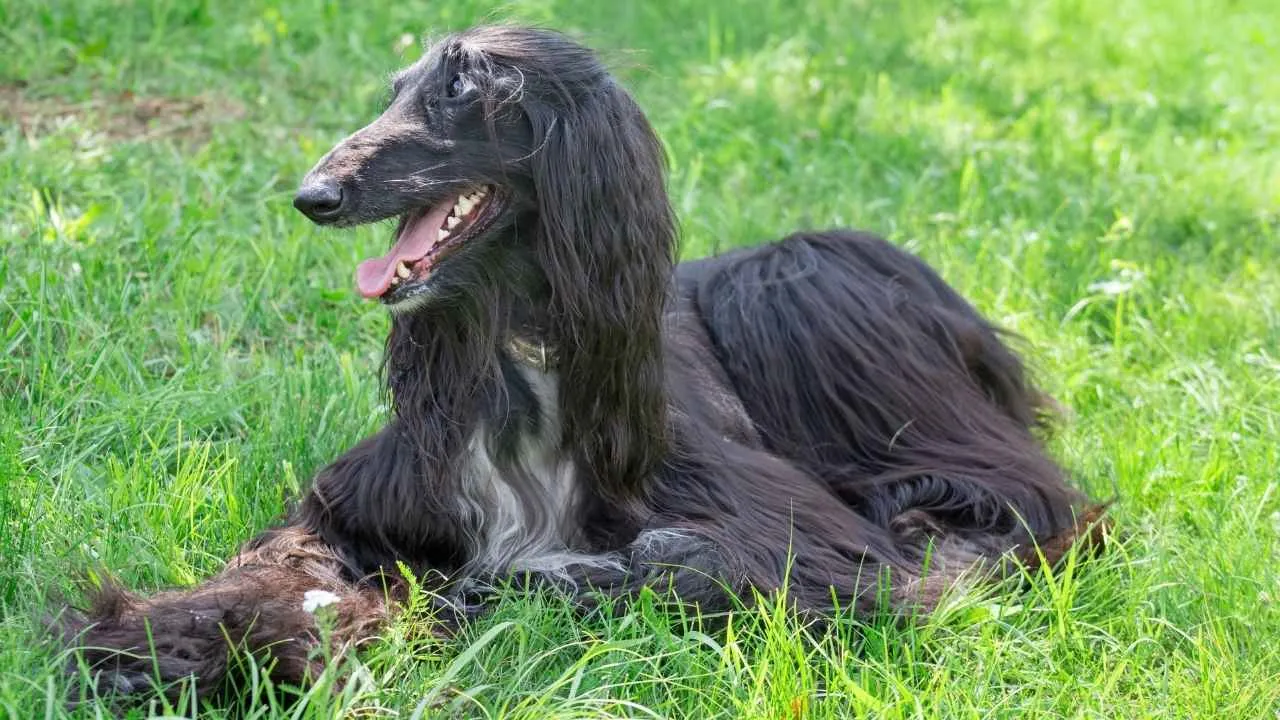
As noted by the AKC, the Afghan Hound stands out as one of the most strikingly beautiful dog breeds, known for its aloof elegance and noble demeanor. Beneath its majestic exterior, however, lies a playful side and a deep sense of devotion to its family.
With their regal presence and flowing, silky coat, Afghan Hounds are living relics of the canine world, perfectly embodying the spirit of ancient puppy breeds. Their beauty is matched by a history of resilience and utility that has allowed them to thrive through centuries of evolution and shifting civilizations.
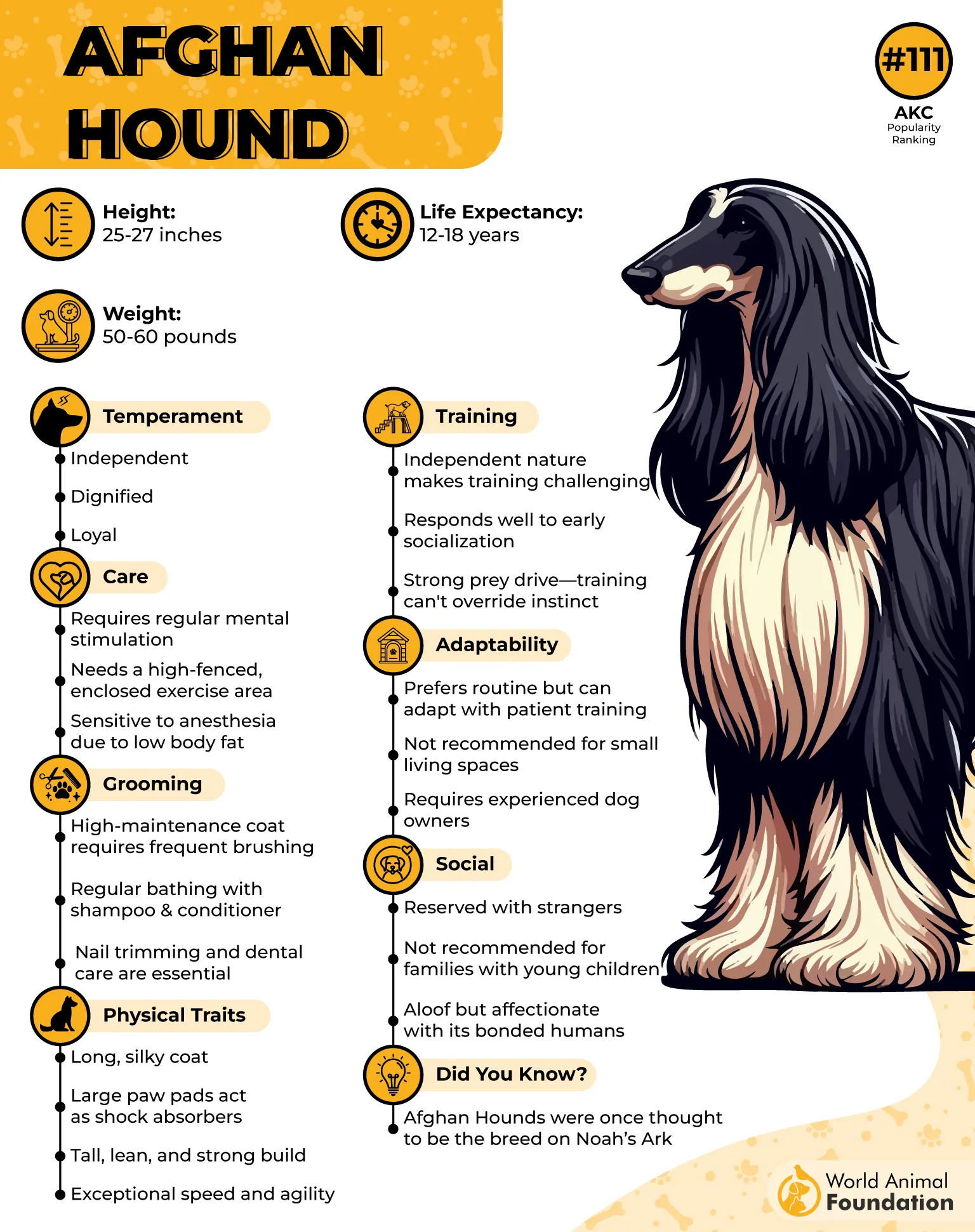
History
Despite long-standing beliefs that link the Afghan Hound to Egypt, stronger evidence places their origin in the rugged, mountainous terrain of Afghanistan and surrounding regions. Bred by nomadic tribes, these swift and powerful sighthounds were relied upon to chase and capture game, including fleet-footed antelope and, according to some accounts, even leopards.
Their fierce hunting abilities were matched by their elegance, catching the attention of British officers who later introduced them to Western audiences under names like Barukzy Hounds and Persian Greyhounds. Genetically, Afghan Hounds are considered a basal breed, meaning they split from wolves early in domestication history and predate most modern dog breeds. Their dense, luxurious coat isn’t just ornamental, it is vital for insulating them against Afghanistan’s harsh climate.
Did you know? Eyewitnesses once claimed Afghan Hounds could snap a leopard’s spine with their jaws during hunts.
3. Basenji
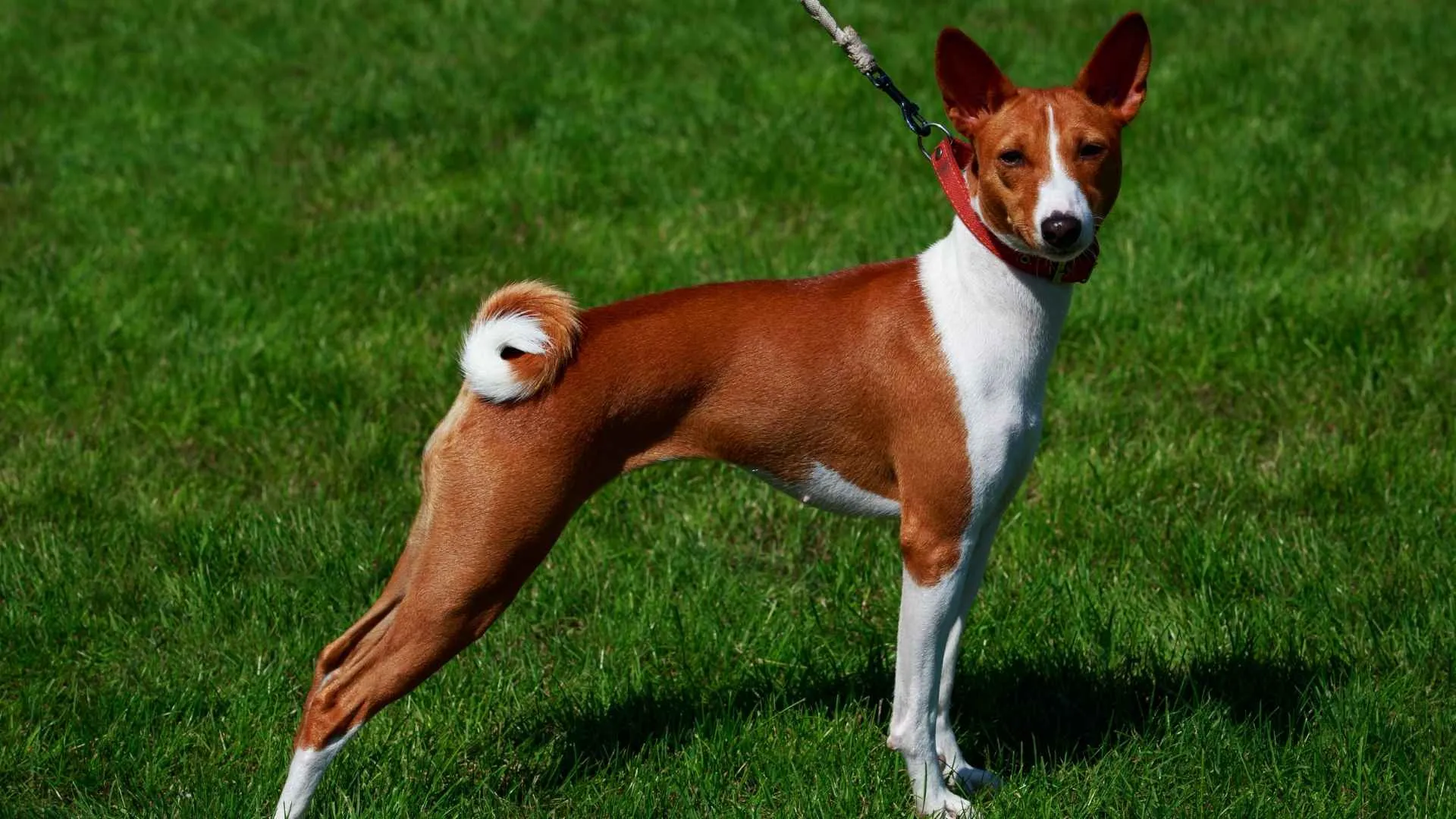
PetMD reports that Basenjis are a small breed, typically reaching 16 to 17 inches in height at the shoulder. They are known for their agility and graceful movement, with the ability to leap straight up. Their appearance is marked by a sleek, short coat and a tightly curled tail. Mysterious, elegant, and surprisingly catlike, the Basenji is one of the few canine companions whose ancient heritage remains visibly intact.
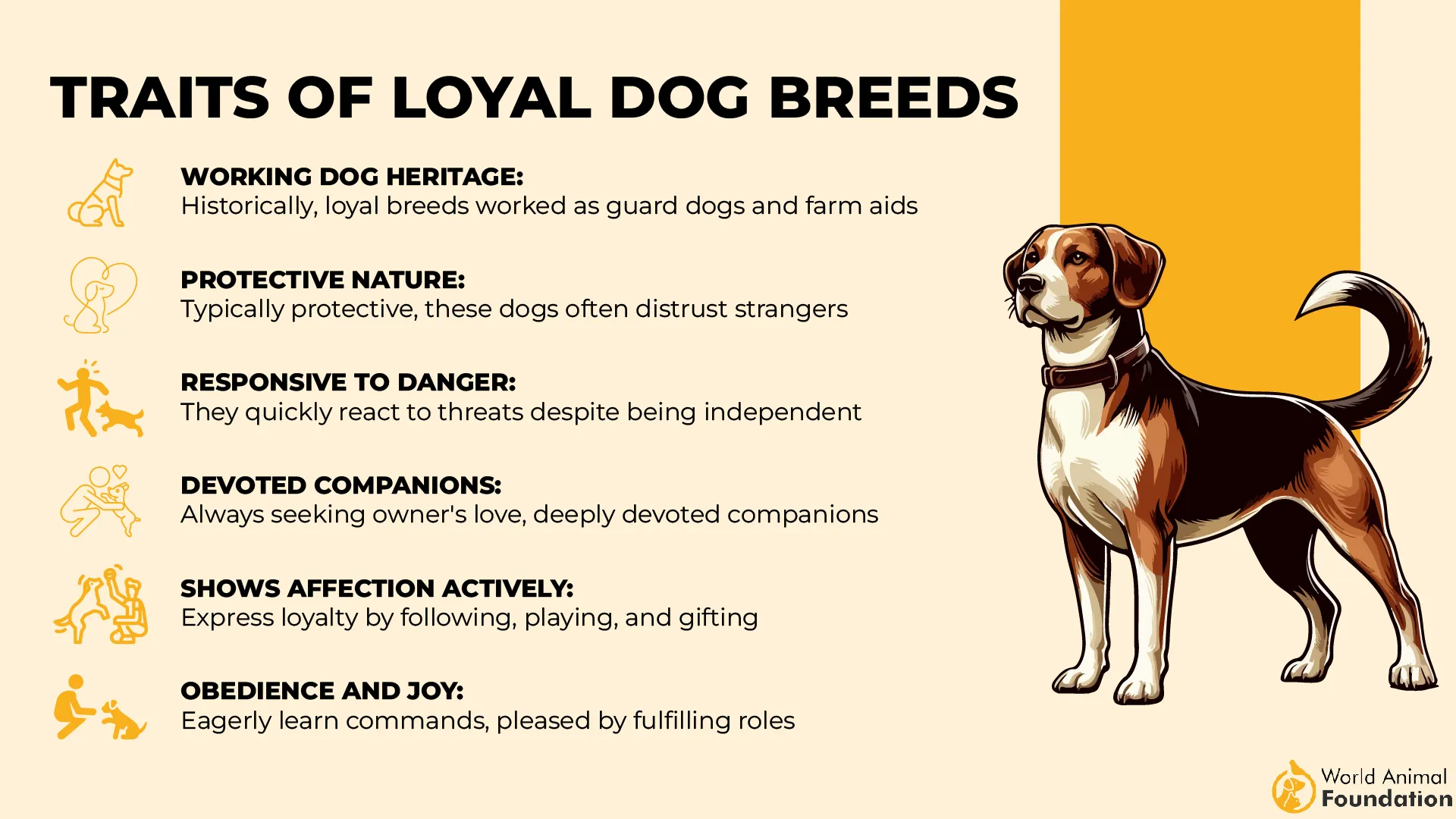
A true representative of “Ancient Puppy Breeds,” this dog carries the silent dignity and primal instincts of a time when humans and animals lived in closer communion with nature. This is one of the most ancient dog breeds.
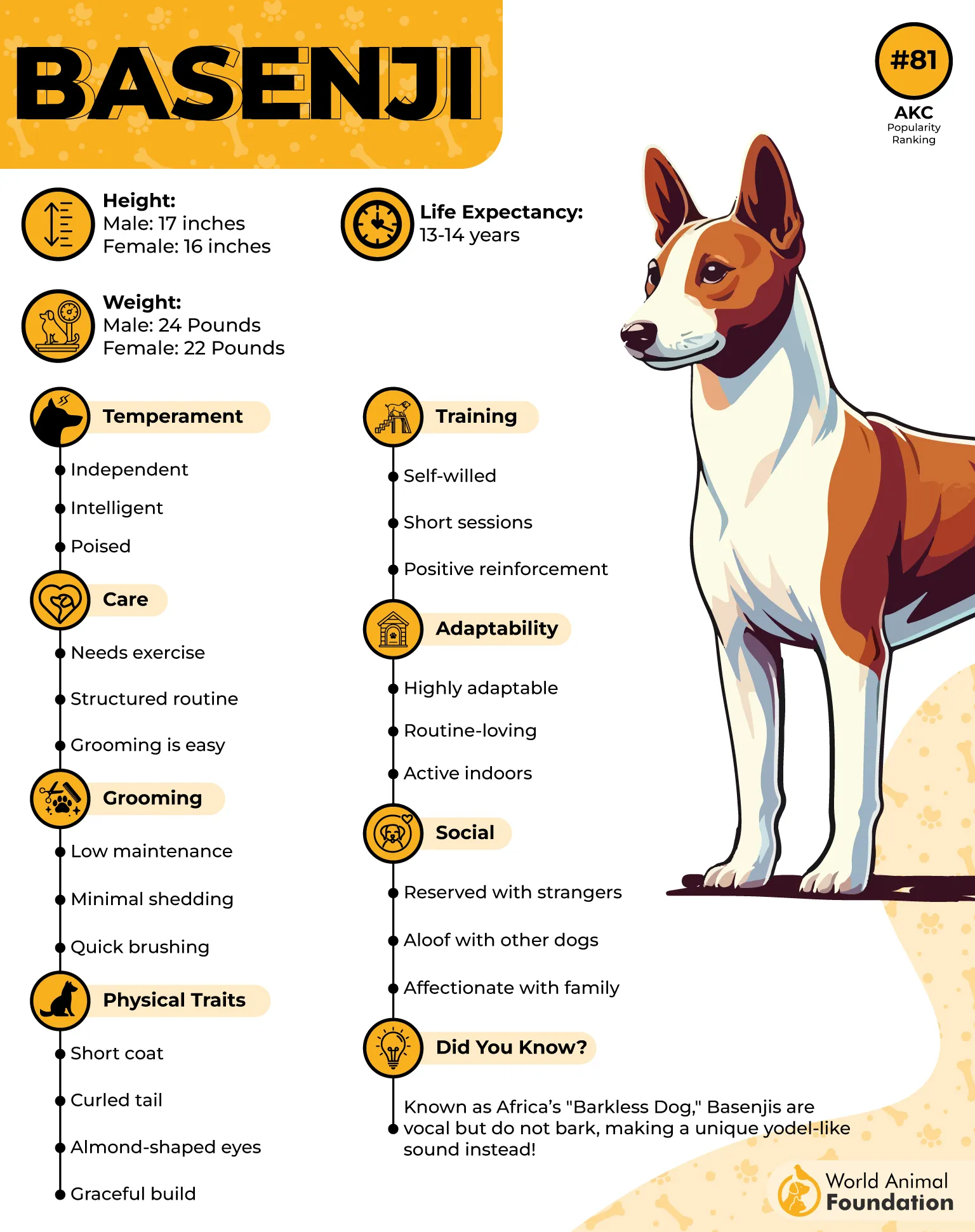
History
Originating in the heart of Central Africa, most notably in the Congo, the Basenji is one of the oldest known domesticated dogs, with ancestral roots dating back as far as 6000 BCE. Early cave paintings in Libya and Egyptian tomb art depict dogs strikingly similar to the Basenji, underscoring their role as hunting partners and even symbols of divinity.
It is widely believed that this breed inspired the image of Anubis, the jackal-headed god of the underworld. Isolated for centuries in dense forests and savannas, the breed retained many of its primitive characteristics, such as its yodel-like vocalization, exceptional cleanliness, and a lack of the typical “doggy” odor.
Agile and alert, Basenjis developed an unusual ability to spring straight up into the air, a skill useful for spotting prey above the tall grasses of their native terrain.
Did you know? One of the Basenji’s African names translates to “the jumping-up-and-down dog.”
4. Saluki
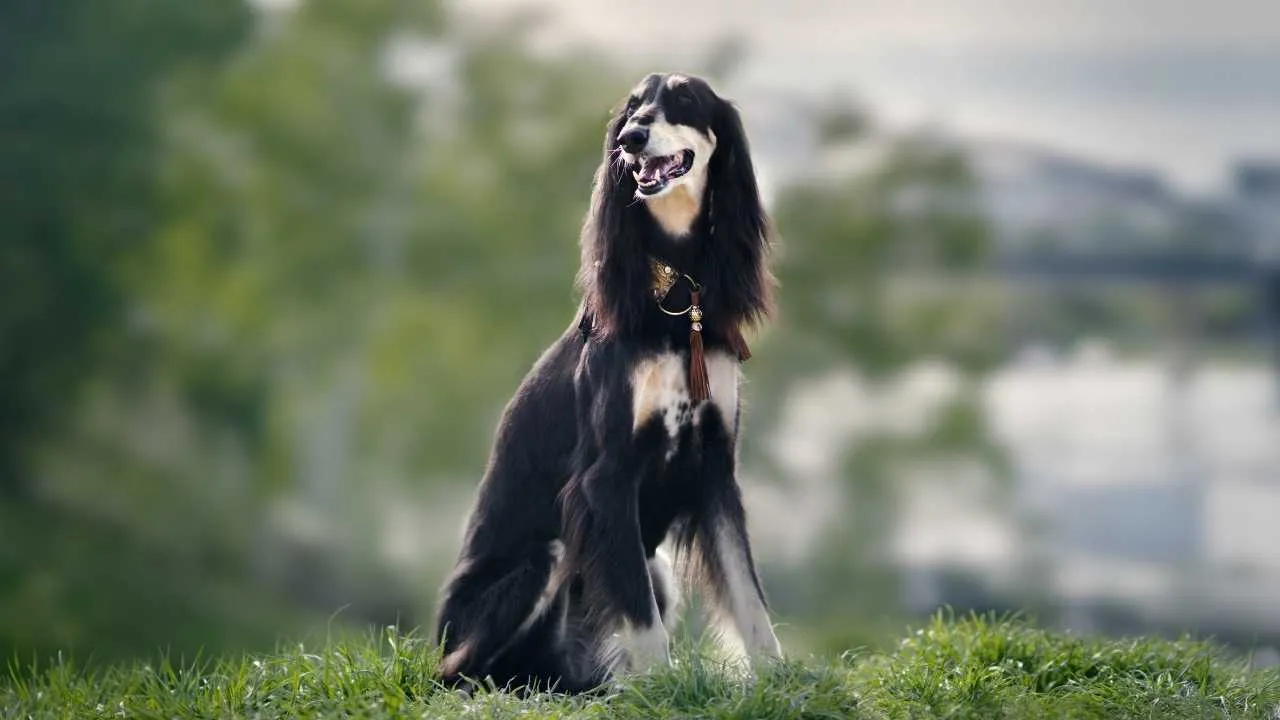
Britannica states that Salukis are devoted and kind-hearted companions to people of all ages. They are generally quiet and rarely bark. While they tend to have a calm to low energy level, often spending much of the day resting, they are incredibly fast runners and benefit from a daily chance to sprint.
Without enough stimulation, they may become destructive out of boredom. Epitomizing the grace and endurance of ancient canine companions, the Saluki is one of the oldest known dog breeds still in existence.
With its sleek frame and flowing coat, this elegant sighthound is a living testament to the early bond between humans and hunting dogs, making it a natural inclusion in any exploration of ancient puppy breeds.
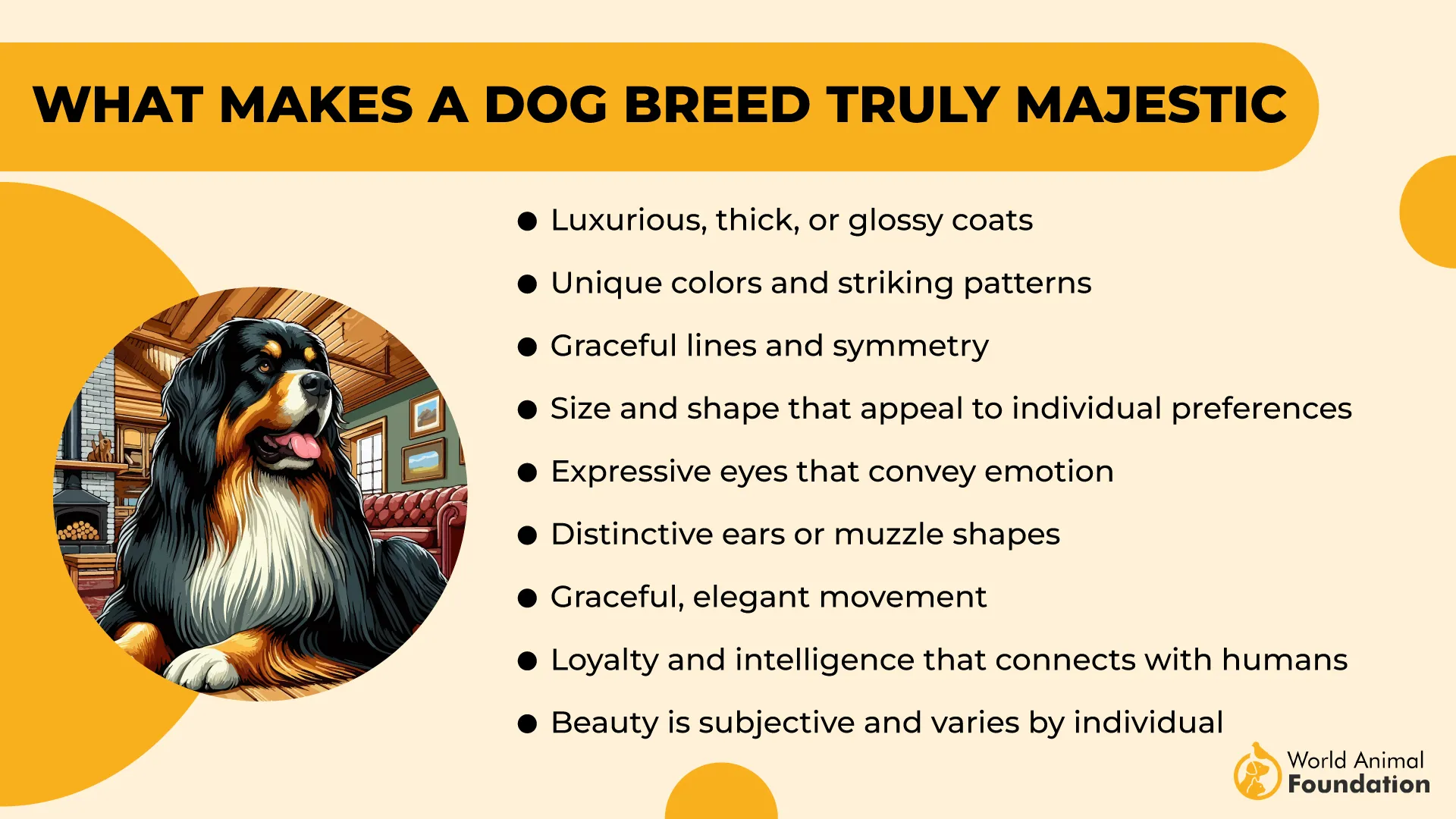
History
The Saluki’s lineage stretches back to as early as 7000 BCE, with depictions of Saluki-like dogs discovered in the art and tombs of ancient Egypt and Mesopotamia. Originally bred in the Fertile Crescent, this agile hunter earned favor among both Egyptian pharaohs and Arab nomads, thanks to its unmatched speed and stamina.
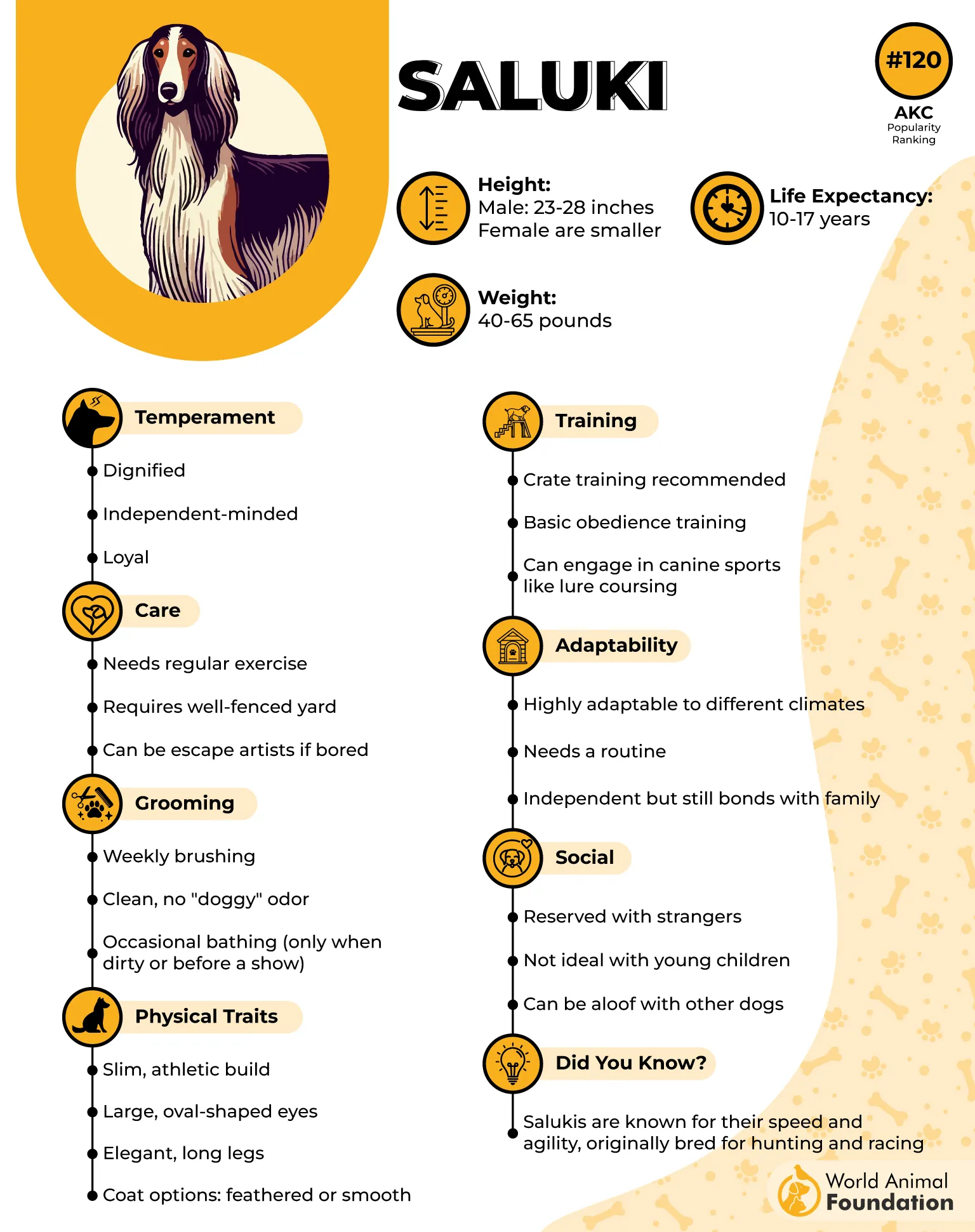
The breed’s reputation soared during Egypt’s Eighteenth Dynasty, while archaeological finds, including a golden pendant from 3300 BCE and mummified remains in Upper Nile tombs, underscore its longstanding cultural importance.
Renowned for chasing prey by sight rather than scent, Salukis were often used to hunt swift animals like gazelles. In harsher terrains such as northern Iran and Turkey, they evolved a more robust build to tackle larger quarry-like deer. Despite their independent nature, these dogs form strong bonds with their humans and remain a dignified, athletic presence in both home and sport.
Did you know? The Saluki holds the Guinness World Record for being the oldest dog breed in the world.
5. Alaskan Malamute
Among the most enduring ancient breeds, the Alaskan Malamute is a symbol of strength, endurance, and loyalty. With their thick coats and powerful frames, these Arctic sled dogs have withstood some of the planet’s harshest conditions while forming deep bonds with the people who relied on them for survival.
According to WebMD, Malamutes have a strong background in strenuous labor and impressive stamina. Because of this heritage, they continue to be very energetic regardless of the climate and need plenty of physical activity to stay healthy and happy.
History
Tracing its lineage back over 4,000 years, the Alaskan Malamute descended from domesticated wolf-dogs that journeyed across the Bering Strait into North America alongside nomadic hunters. As these early travelers settled in what is now Alaska, they developed a strong, resilient breed used to haul heavy sleds, assist in seal hunts, and even ward off polar bears.
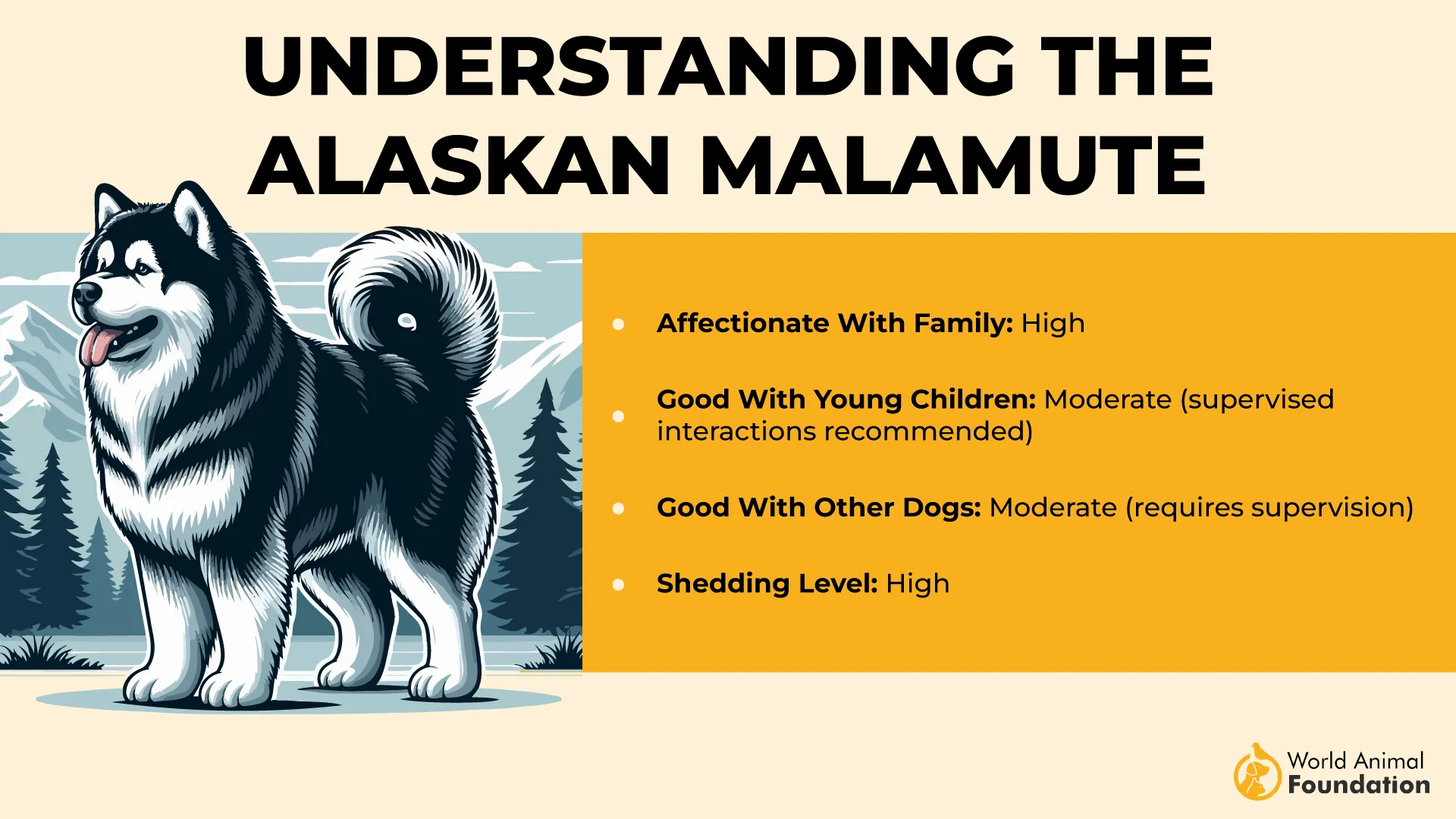
The breed takes its name from the Mahlemiut, an Inuit tribe in northwestern Alaska’s Kotzebue Sound, who refined and preserved these dogs through generations. Their geographical isolation helped shield the Malamute from the genetic dilution that affected many other breeds, even surviving the Gold Rush era with much of their original traits intact.
Did you know? Despite near-extinction due to cross-breeding, the Malamute’s ability to endure Alaska’s brutal winters ensured the breed’s survival.
6. Chow Chow
With its lion-like mane, deep-set eyes, and noble bearing, the Chow Chow stands out as a striking representative of ancient puppy breeds. Revered for centuries, this breed reflects the fusion of elegance and strength, traits that have earned it a prominent place in Chinese history and legend.
History
Originating in China around 200 BC, the Chow Chow’s legacy stretches back to the time of the Han Dynasty, with visual evidence of the breed appearing in pottery and sculptures even earlier, during the Hun Dynasty. Initially serving as an all-purpose working dog, the Chow Chow was a hunter, guardian, hauler, and a cherished companion of the Chinese aristocracy.
While the exact roots of the breed remain obscure, some believe its name might come from the Chinese word chou, suggesting it may have also been bred for consumption. Over time, the breed’s imposing appearance and loyal nature solidified its role as a trusted protector.
Its thick coat shielded it from harsh climates, while its independent temperament made it a formidable presence in ancient households.
Did you know? The Chow Chow has a unique blue or black tongue, a rare trait shared only with the Chinese Shar-Pei.
7. Tibetan Terrier
Among the many ancient breeds, the Tibetan Terrier holds a unique place, not only as a devoted companion but also as a spiritual guardian. Revered as the “Holy Dog of Tibet,” this breed’s role extended far beyond affection; they were protectors of the home and bringers of good fortune to those who cared for them.
History
Originating over 2,000 years ago in the remote Himalayan mountains, this ancient dog breed was lovingly raised within Buddhist monasteries. Despite the misleading name, they are not true terriers but were instead bred for their versatility and resilience.
Tibetan monks and local families entrusted these shaggy, sure-footed dogs with herding livestock across narrow, rocky paths and guarding sacred spaces. Their thick coats evolved to withstand the harsh mountain climate, while their distinctive “snowshoe” paws provided grip on treacherous terrain.
Deeply intertwined with Tibetan culture, they were seen as symbols of luck and affection. Stories even recount the Dalai Lama taking his cherished Tibetan Terrier, Senge, into exile, further cementing the breed’s spiritual and historical significance.
Did you know? These guard dogs were so adept at herding that they reportedly jumped onto the backs of sheep to keep them moving along mountain trails.
Conclusion
The story of ancient puppy breeds is a testament to the enduring bond between humans and domestic dogs. From the majestic Afghan Hound, known for its hunting prowess and elegant form, to the revered Tibetan Terrier, a symbol of luck and loyalty in Buddhist monasteries, these breeds connect us to a time when dogs were more than companions; they were essential partners in survival, spirituality, and daily life. Their characteristics, behaviors, and even appearances reflect generations of purposeful breeding shaped by environment and culture.
Today, many of these ancient dogs remain with us not just as cherished pets but as living links to our shared history. Organizations like the American Kennel Club recognize and preserve the legacy of such purebred dogs, ensuring that their traits and heritage endure. While some ancient breeds like the Saluki or Akita continue to garner admiration, others, like the Australian Cattle Dog, illustrate how ancient lineage can blend with more modern development to create breeds that serve both traditional and contemporary roles.
As we welcome other dogs into our homes, it’s worth remembering that behind every wagging tail is a history that spans millennia. These timeless canines remind us that the journey of domestic dogs is, and always has been, deeply intertwined with our own.


